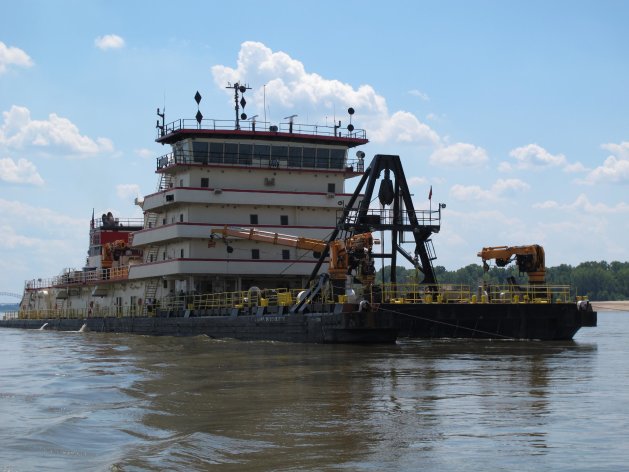
New Orleans-based Coast Guard spokesman Ryan Tippets said the stretch of river near Greenville, Miss., has been closed intermittently since Aug. 11, when a vessel ran aground.
Tippets said the area is currently being surveyed for dredging and a Coast Guard boat is replacing eight navigation markers. He says 40 northbound vessels and 57 southbound vessels were stranded and waiting for passage Monday afternoon.
Tippets said it is not immediately clear when the river will re-open. A stretch of river near Greenville was also closed in 1988 due to low water levels caused by severe drought. The river hit a record low on the Memphis gauge that year.
The Mississippi River from Illinois to Louisiana has seen water levels plummet due to drought conditions in the past three months. Near Memphis, the river level was more than 12 feet lower than normal for this time of year.
Maintaining the navigation channel is essential to keeping vessels from colliding or running aground. Thousands of tons of material are shipped on the river each day.
The U.S. Army Corps of Engineers is using dredges to dig out sand and ensure the navigation channel is deep enough for barges loaded with coal, steel, agricultural products and other goods. The corps is required to provide a minimum navigation channel that is 9 feet deep and 300 feet wide on the lower Mississippi River.
Shippers who move material up and down the river on a daily basis have complained that the shallow river is forcing them to lighten the loads on their barges to avoid hitting bottom. Lighter loads mean less revenue for the shippers, who still have to deal with costs such as labor and fuel.
Also, low water at docks and terminals makes it more difficult to load or unload material, as ships have trouble getting close enough to docks.
Just north of downtown Memphis on Friday, the dredge Hurley was cutting a 2,000-foot swath of river bottom to ensure that the channel is safe for vessels. The dredge is referred to as a dustpan, which means it uses a vacuum-like suction to suck up sand from the river bottom, said its captain, Frank Segree.
The Hurley can dredge to a depth of 75 feet and can remove up to 5,000 cubic yards of sediment per hour. That's enough to fill about 68 backyard swimming pools in one hour.
After the sand is removed, it is then pushed through a 1,200 foot pipeline that deposits it on the banks of the river. For safety's sake, the dredge tries to make the channel deeper than the required 9-foot mark whenever possible, Segree said.
The 350-foot long dredge is powered by three 16-cylinder engines that generate 10,000 horsepower combined, yet the vessel was moving just .12 miles per hour as it slowly removed the sand from the channel.
Before dredging begins, a survey crew checks the river bottom to see where the more shallow banks and shoals are located. After digging in one location, the survey crew and the dredge move on to another trouble spot.
"We're hitting the high spots, then getting out of the way," Segree said, adding that this has been his busiest year for dredging in the 20 years he has been with the Corps.
The river level in Memphis was minus-8.5 feet on Friday, according to the Corps of Engineers. The "minus" reading does not mean the river is dried up -- it's just a measurement based on how the Memphis river gauge is designed. Essentially, the reading means the river level is far below normal.
The record for the lowest measured water level for the Mississippi River near Memphis is minus-10.7 feet, in 1988. The Corps has said the river is not expected to reach record lows.
Segree said four dredges are currently working from St. Louis to Vicksburg, Miss., performing a job that is essential to U.S. industry but is hardly noticed by the general public.
"If we lose the river system it's just like losing the interstate highway system," Segree said. "Commerce is a vital part of our nation. This is a main artery for commerce."
/



No comments:
Post a Comment